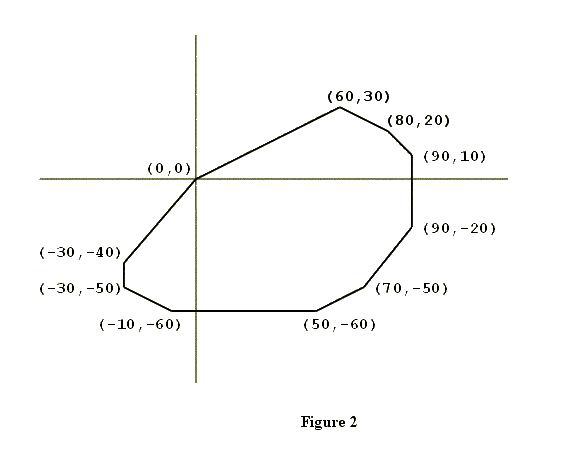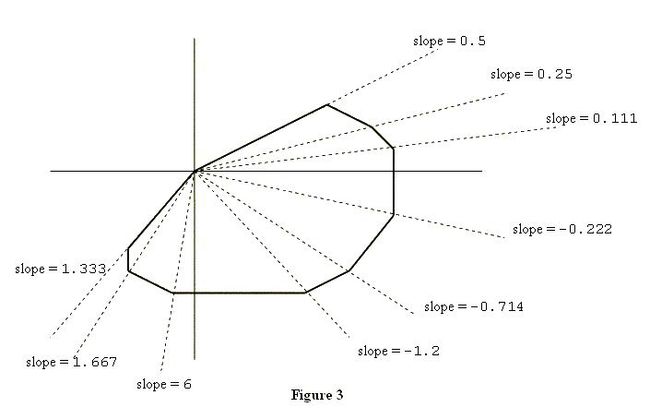- vllm多卡部署Qwen2.5-72B-Instruct-GPTQ-Int4
Yanc_L
人工智能
双卡v10032G部署结果如下,推理时长16s3卡,tensor_parallel_size=3,tensor并行的数量一定要能被attentionheads整除4卡,tensor_parallel_size=4,推理速度4s
- HarmonyOS NEXT开发实战:自定义TabBar案列
一晃有一秋
鸿蒙鸿蒙实例harmonyos华为鸿蒙鸿蒙系统android
介绍本示例主要介绍了TabBar中间页面如何实现有一圈圆弧外轮廓以及TabBar页签被点击之后会改变图标显示,并有一小段动画效果。效果图预览使用说明:依次点击tabBar页面,除了社区图标之外,其它图标往上移动一小段距离。实现思路场景1:TabBar中间页面实现有一圈圆弧外轮廓将Image组件外层包裹一层容器组件,通过设置borderRadius以及margin的top值实现圆弧外轮廓效果。这里b
- HarmonyOS Next应用开发——自定义组件的使用
高心星
鸿蒙os移动应用开发harmonyos华为鸿蒙
【高心星出品】自定义组件的使用在ArkUI中,UI显示的内容均为组件,由框架直接提供的称为系统组件,由开发者定义的称为自定义组件。在进行UI界面开发时,通常不是简单的将系统组件进行组合使用,而是需要考虑代码可复用性、业务逻辑与UI分离,后续版本演进等因素。因此,将UI和部分业务逻辑封装成自定义组件是不可或缺的能力。创建自定义组件自定义组件的基本结构@Componentexportstructhel
- 使用jcodec库,访问网络视频提取封面图片上传至oss
鑫品
音视频传媒
注释部分为FFmpeg(确实方便但依赖太大,不想用)packagecom.zuodou.upload;importcom.aliyun.oss.OSS;importcom.aliyun.oss.model.ObjectMetadata;importcom.aliyun.oss.model.PutObjectRequest;importcom.zuodou.oss.OssProperties;//i
- 【每日学点HarmonyOS Next知识】对话框去掉圆角、数组拼接、自定义对话框依附某个控件、平移动画、页面栈管理
轻口味
每天学点HarmonyOSNext知识harmonyos华为harmonyosnext
1、HarmonyOSCustomDialog怎么去掉左右和底部的透明以及圆角?CustomDialog怎么去掉左右和底部的透明以及圆角设置customStyle为true即可开启使用自定义样式。设置borderRadius为0去掉圆角属性。属性用法参考文档:https://developer.huawei.com/consumer/cn/doc/harmonyos-references-V5/t
- 【Javascript网页设计】在线图片画板案例
Netsuite + 影刀
Javascript案例javascript
代码如下:在线画板body{text-align:center;font-family:Arial,sans-serif;margin:20px;}.toolbar{margin-bottom:10px;}canvas{border:2pxsolid#000;cursor:crosshair;}button{margin:5px;padding:8px15px;border:none;backgr
- Python函数与模块
第④颗VC小铁树
python数据库开发语言笔记其他经验分享百度
包含编程资料、学习路线图、源代码、软件安装包等!【[点击这里]】!一、函数函数是一段可以重复使用的代码,通过传递的参数返回不同的结果,前面章节已经使用了Python定义的函数如range()、len()、input(),本章讲解用户自定义的函数。对于重复使用的代码,可以编写为自定义函数以便于重复使用代码,同时提高开发人员的开发效率。函数可以分为无参函数和带参函数。1.1无参函数Python的自定义
- 力扣热题 100:图论专题经典题解析
剑走偏锋o.O
leetcode图论算法java学习笔记
文章目录一、岛屿数量(题目200)1.题目描述2.示例3.解题思路4.代码实现(Java)5.复杂度分析二、腐烂的橘子(题目994)1.题目描述2.示例3.解题思路4.代码实现(Java)5.复杂度分析三、课程表(题目207)1.题目描述2.示例3.解题思路4.代码实现(Java)5.复杂度分析四、实现Trie(前缀树)(题目208)1.题目描述2.示例3.解题思路4.代码实现(Java)5.复杂
- 【PTA】团体程序设计天梯赛-练习集 L2题目总结(完)
karshey
我的ACM之路
模拟题L2-002链表去重(链表模拟)L2-002链表去重用两个数组分别表示键值和下一个结点来模拟链表。注意可能存在无重复键值的绝对值的情况。#includeusingnamespacestd;#definefir(i,a,n)for(inti=a;imp;inta[N],ne[N];//某个地址的键值、下一个地址structnode{intv,d;};vectorans1,ans2;intmai
- 实用建模技术
一条九漏鱼
verilogHdl数字设计与综合fpga开发
1、过程连续赋值1.assign和deassign:该结构目前被认为是很糟糕的编码风格,建议禁用。deassign表示一直保持被赋予的值,直到下一次改变。moduleedge_dff(inputwired,inputwireclk,inputwirerst,outputregq,outputregqbar);always@(posedgeclk)beginq=d;qbar=~d;endalways
- [C/C++]滑动窗口专题/最小覆盖子串/字符串排列/找到字符串中所有字母异位词/无重复字符的最长子串/串联所有单词的子串
消失男孩
热门面试题
以下内容节选自公众号:labuladong《我写了套框架,把滑动窗口算法变成了默写题》,传送门在最下方参考链接1。我觉得非常牛逼,在此记录,方便复习。1、框架2、LeetCode76:最小覆盖子串3、LeetCode567:字符串排列4、LeetCode438:找到字符串中所有字母异位词5、LeetCode3:无重复字符的最长子串6、LeetCode30:串联所有单词的子串1、框架以下框架中,遇到
- 配置文件对比工具
foolishboy_w
开发工具提效小工具服务器json
配置文件对比工具文章目录配置文件对比工具Introdutiongit地址QuickStart1.下载源码,获取可执行的jar包2.执行jar包,对比文件3.执行结果说明Introdutionconfig-compare是一个小工具,你可以使用它来对比配置文件。目前支持的配置文件格式有yaml、yml、properties以及json,甚至你可以对比两个类型不同的文件,比如yml和json。git地
- 专题二——滑动窗口
有时间要学习
算法基础算法
目录一长度最小的子数组二无重复字符的最长字符串三最大连续1的个数Ⅲ四将x减到0的最小操作数五水果成篮六找到字符串中所有字母异位词七串联所有单词的子串八最小覆盖子串原理:定义两个指针(下标)来维护所指向的区间始终是符合题目要求,大致分为三步:1进窗口:用一个指针来进行遍历搜索使指针区间符合要求2更新值:该区间符合要求后记录存储数值(可以是任意区间)3出窗口:另一个指针开始进行向后走继续查找符合要求的
- C++二叉搜索树代码
qq_43355454
c++算法leetcode
代码一,对应力扣二叉搜索树中的检索,代码见下/***Definitionforabinarytreenode.*structTreeNode{*intval;*TreeNode*left;*TreeNode*right;*TreeNode():val(0),left(nullptr),right(nullptr){}*TreeNode(intx):val(x),left(nullptr),righ
- TCP服务端和客户端实例代码
hhaijiuwo
TCP网络编程网络通信socketlinux
1、TCP服务器#include#include#include#include#include#includevoiderror_handling(char*message){fputs(message,stderr);fputc('\n',stderr);exit(1);}intmain(intargc,char*argv[]){intserv_sock;intclnt_sock;struct
- 开源模型应用落地-Qwen2.5-7B-Instruct与vllm实现推理加速的正确姿势-Docker-OpenResty(三)
开源技术探险家
开源模型-实际应用落地#深度学习自然语言处理语言模型
一、前言目前,大语言模型已升级至Qwen2.5版本。无论是语言模型还是多模态模型,均在大规模多语言和多模态数据上进行预训练,并通过高质量数据进行后期微调以贴近人类偏好。另外,使用Docker实现便捷测试成为一种高效的解决方案。通过将模型及其运行环境封装在Docker容器中,开发者可以确保模型在不同环境下的行为一致性,避免由于环境差异导致的不可预见的错误。Docker的轻量级特性使得测试可以迅速部署
- 手写tomcat+servlet,浅析原理
小新的蜡笔不见了
Tomcattomactservlet
手写tomcat+servlet,浅析原理概念逻辑手写实现便于管理我就在资源文件夹新建property.properties文件,可以设置端口新建servlet之前可定要先定义Request和Response新建Myservlet,在这之前写一个servlet吧,毕竟有些方法每次都要用需要用到的工具类重头戏回顾最近回头看了servlet,写了一个简易版的tomcat+servlet。代码都上传到了
- Java知识点——IO流
小布不吃竹
java
目录一、IO流基础概念二、常见的IO流类三、字符流1.字符输入流(Reader)与字符输出流(Writer)2.常用实现类3.实例四、字节流1.字节输入流(InputStream)与字节输出流(OutputStream)2.实例一、IO流基础概念在Java中,IO流被抽象为一系列类和接口,主要分为两大类:输入流(InputStream/Reader)和输出流(OutputStream/Writer
- 【算法】010、合并两个有序链表
呆呆的猫
算法算法链表数据结构
【算法】010、合并两个有序链表文章目录一、合并两个有序链表1.1思路1.2多语言解法一、合并两个有序链表1.1思路//gopackagemainimport("fmt""strconv")typeListNodestruct{ValintNext*ListNode}func(n*ListNode)String()(ansstring){for;n!=nil;n=n.Next{ans+="=>"a
- Java多线程与高并发专题——什么是阻塞队列?
黄雪超
技术基础java开发语言并发编程
引入阻塞队列(BlockingQueue)是一种线程安全的队列数据结构,它的主要特点是:线程安全:多个线程可以安全地同时访问队列。阻塞操作:当队列为空时,从队列中获取元素的操作会被阻塞,直到队列中有元素可用;当队列为满时,向队列中插入元素的操作会被阻塞,直到队列有空间可用。BlockingQueueBlockingQueue继承了Queue接口,是队列的一种。Queue和BlockingQueue
- 大模型与图数据库RAG通俗流程拆解
gallonyin
产品笔记AI知识图谱
图构建(略)neo4j、tugraph等均可,不影响GraphRAG核心框架模型向量化模型bce-embedding-base_v1重排序模型bce-reranker-base_v1大语言模型Qwen/Qwen2.5-32B-Instruct图数据库tugraph索引faiss核心流程这个调用链日志展示了一个完整的问答系统处理用户输入“百草园里有什么”的过程。本项目使用和参考了开源项目茴香豆。以下
- 循环链表 - 使用JavaScript封装
幸运小圣
数据结构和算法链表javascript数据结构
我学习了一生,现在我还在学习,而将来,只要我还有精力,我还要学习下去。”——别林斯基目录循环链表:封装循环链表-js:应用场景:循环链表:循环链表和链表之间唯一的区别在于,最后一个元素指向下一个元素的指针不是引用undefined,而是指向第一个元素head。图为千锋教育所截,侵权联系删除。封装循环链表-js:这里封装的循环链表还是继承了之前写的单链表。。。classNode{constructo
- Hadoop的mapreduce的执行过程
画纸仁
大数据hadoopmapreduce大数据
一、map阶段的执行过程第一阶段:把输入目录下文件按照一定的标准逐个进行逻辑切片,形成切片规划。默认Splitsize=Blocksize(128M),每一个切片由一个MapTask处理。(getSplits)第二阶段:对切片中的数据按照一定的规则读取解析返回对。默认是按行读取数据。key是每一行的起始位置偏移量,value是本行的文本内容。(TextInputFormat)第三阶段:调用Mapp
- 部署 及 使用 etl crontab 和 etl engine
**如何部署及使用etl_crontab和etl_engine**内容详细,适合新人上手1、前置条件获取到以下文件列表code.bin(授权文件,必须)code.key(授权文件,必须)conf.cron(调度配置文件,使用etl_crontab必须)sys.properties(环境配置文件,使用etl_crontab必须)etllog_mysql.sql(日志表结构文件,使用etl_cront
- MVVM 模式和 MVC 模式区别
weixin_44356698
前端面试2025vue
MVVMExample{{message}}//ViewModelnewVue({el:'#app',data:{//Modelmessage:''}});MVCExample//Modelletmodel={message:''};//Viewconstinput=document.getElementById('input');constoutput=document.getElementBy
- 前端常用布局
ox0080
#北漂+滴滴出行VIP激励WebCSS前端布局html
1.传统两栏布局+响应式适配文件名:traditional-two-column.html传统两栏布局示例*{margin:0;padding:0;box-sizing:border-box;}/*导航栏*/.nav{background:#2c3e50;padding:1rem;color:white;}/*主体容器*/.container{overflow:hidden;/*清除浮动*/}/*
- 1.梦的开始——点灯大师
雷门大师姐
单片机嵌入式硬件51单片机
1.什么是GPIO不论学习什么单片机,最简单的外设莫过于IO口的高低电平控制,本章就是通过控制51单片机的GPIO使开发板上的LED灯点亮。GPIO(generalpurposeinputoutput)是通用输入输出端口的简称,可以通过软件来控制其输入和输出。51单片机芯片的GPIO引脚与外部设备连接起来,从而实现与外部通讯、控制以及数据采集的功能。不过GPIO最简单的应用还属点亮LED灯了,只需
- Arcgis投影坐标系转为地理坐标系
翘楚、
arcgis
起因是看到一幅地图,框框里有个“15”,但不知道什么意思,再加上初始坐标是“XY”格式的,因此记录一下坐标转换过程中遇到的问题。问题解答“15”意为按6°分带,处于第15带。因此这幅图使用2000的投影坐标系(CGCS2000_GK_Zone_15)。再将其转为2000的地理坐标系,属性表–计算几何–十进制度,就可以得到经纬度。此时“显示XY数据”–坐标系选择WGS84,即可显示数据。用到的博文:
- python机试1:读取和输出数据
大多_C
python华为od开发语言
读取和输出数据在LeetCode和机试中也是很重要的基础。你需要掌握文件读取、输入处理、输出优化,才能应对不同类型的题目和考试环境。以下是详细的知识点:1.标准输入与输出✅Python标准输入input()机试中,很多题目要求从标准输入stdin读取数据,通常使用:n=int(input())#读取一个整数s=input().strip()#读取一行字符串arr=list(map(int,inpu
- FFplay 7.0 文档
宋志辉
FFmpeg7.0文档ffplayffmpeg
ffplay文档1.概要ffplay[options][input_url]2.描述FFplay是一个非常简单且可移植的媒体播放器,使用FFmpeg库和SDL库。它主要用作各种FFmpegAPI的测试平台。3.选项如果没有特别说明,所有数值选项都接受一个表示数字的字符串作为输入,该字符串可以后跟SI单位前缀之一,例如:‘K’、‘M’或‘G’。如果在SI单位前缀后附加‘i’,则整个前缀将被解释为二进
- 怎么样才能成为专业的程序员?
cocos2d-x小菜
编程PHP
如何要想成为一名专业的程序员?仅仅会写代码是不够的。从团队合作去解决问题到版本控制,你还得具备其他关键技能的工具包。当我们询问相关的专业开发人员,那些必备的关键技能都是什么的时候,下面是我们了解到的情况。
关于如何学习代码,各种声音很多,然后很多人就被误导为成为专业开发人员懂得一门编程语言就够了?!呵呵,就像其他工作一样,光会一个技能那是远远不够的。如果你想要成为
- java web开发 高并发处理
BreakingBad
javaWeb并发开发处理高
java处理高并发高负载类网站中数据库的设计方法(java教程,java处理大量数据,java高负载数据) 一:高并发高负载类网站关注点之数据库 没错,首先是数据库,这是大多数应用所面临的首个SPOF。尤其是Web2.0的应用,数据库的响应是首先要解决的。 一般来说MySQL是最常用的,可能最初是一个mysql主机,当数据增加到100万以上,那么,MySQL的效能急剧下降。常用的优化措施是M-S(
- mysql批量更新
ekian
mysql
mysql更新优化:
一版的更新的话都是采用update set的方式,但是如果需要批量更新的话,只能for循环的执行更新。或者采用executeBatch的方式,执行更新。无论哪种方式,性能都不见得多好。
三千多条的更新,需要3分多钟。
查询了批量更新的优化,有说replace into的方式,即:
replace into tableName(id,status) values
- 微软BI(3)
18289753290
微软BI SSIS
1)
Q:该列违反了完整性约束错误;已获得 OLE DB 记录。源:“Microsoft SQL Server Native Client 11.0” Hresult: 0x80004005 说明:“不能将值 NULL 插入列 'FZCHID',表 'JRB_EnterpriseCredit.dbo.QYFZCH';列不允许有 Null 值。INSERT 失败。”。
A:一般这类问题的存在是
- Java中的List
g21121
java
List是一个有序的 collection(也称为序列)。此接口的用户可以对列表中每个元素的插入位置进行精确地控制。用户可以根据元素的整数索引(在列表中的位置)访问元素,并搜索列表中的元素。
与 set 不同,列表通常允许重复
- 读书笔记
永夜-极光
读书笔记
1. K是一家加工厂,需要采购原材料,有A,B,C,D 4家供应商,其中A给出的价格最低,性价比最高,那么假如你是这家企业的采购经理,你会如何决策?
传统决策: A:100%订单 B,C,D:0%
&nbs
- centos 安装 Codeblocks
随便小屋
codeblocks
1.安装gcc,需要c和c++两部分,默认安装下,CentOS不安装编译器的,在终端输入以下命令即可yum install gccyum install gcc-c++
2.安装gtk2-devel,因为默认已经安装了正式产品需要的支持库,但是没有安装开发所需要的文档.yum install gtk2*
3. 安装wxGTK
yum search w
- 23种设计模式的形象比喻
aijuans
设计模式
1、ABSTRACT FACTORY—追MM少不了请吃饭了,麦当劳的鸡翅和肯德基的鸡翅都是MM爱吃的东西,虽然口味有所不同,但不管你带MM去麦当劳或肯德基,只管向服务员说“来四个鸡翅”就行了。麦当劳和肯德基就是生产鸡翅的Factory 工厂模式:客户类和工厂类分开。消费者任何时候需要某种产品,只需向工厂请求即可。消费者无须修改就可以接纳新产品。缺点是当产品修改时,工厂类也要做相应的修改。如:
- 开发管理 CheckLists
aoyouzi
开发管理 CheckLists
开发管理 CheckLists(23) -使项目组度过完整的生命周期
开发管理 CheckLists(22) -组织项目资源
开发管理 CheckLists(21) -控制项目的范围开发管理 CheckLists(20) -项目利益相关者责任开发管理 CheckLists(19) -选择合适的团队成员开发管理 CheckLists(18) -敏捷开发 Scrum Master 工作开发管理 C
- js实现切换
百合不是茶
JavaScript栏目切换
js主要功能之一就是实现页面的特效,窗体的切换可以减少页面的大小,被门户网站大量应用思路:
1,先将要显示的设置为display:bisible 否则设为none
2,设置栏目的id ,js获取栏目的id,如果id为Null就设置为显示
3,判断js获取的id名字;再设置是否显示
代码实现:
html代码:
<di
- 周鸿祎在360新员工入职培训上的讲话
bijian1013
感悟项目管理人生职场
这篇文章也是最近偶尔看到的,考虑到原博客发布者可能将其删除等原因,也更方便个人查找,特将原文拷贝再发布的。“学东西是为自己的,不要整天以混的姿态来跟公司博弈,就算是混,我觉得你要是能在混的时间里,收获一些别的有利于人生发展的东西,也是不错的,看你怎么把握了”,看了之后,对这句话记忆犹新。 &
- 前端Web开发的页面效果
Bill_chen
htmlWebMicrosoft
1.IE6下png图片的透明显示:
<img src="图片地址" border="0" style="Filter.Alpha(Opacity)=数值(100),style=数值(3)"/>
或在<head></head>间加一段JS代码让透明png图片正常显示。
2.<li>标
- 【JVM五】老年代垃圾回收:并发标记清理GC(CMS GC)
bit1129
垃圾回收
CMS概述
并发标记清理垃圾回收(Concurrent Mark and Sweep GC)算法的主要目标是在GC过程中,减少暂停用户线程的次数以及在不得不暂停用户线程的请夸功能,尽可能短的暂停用户线程的时间。这对于交互式应用,比如web应用来说,是非常重要的。
CMS垃圾回收针对新生代和老年代采用不同的策略。相比同吞吐量垃圾回收,它要复杂的多。吞吐量垃圾回收在执
- Struts2技术总结
白糖_
struts2
必备jar文件
早在struts2.0.*的时候,struts2的必备jar包需要如下几个:
commons-logging-*.jar Apache旗下commons项目的log日志包
freemarker-*.jar
- Jquery easyui layout应用注意事项
bozch
jquery浏览器easyuilayout
在jquery easyui中提供了easyui-layout布局,他的布局比较局限,类似java中GUI的border布局。下面对其使用注意事项作简要介绍:
如果在现有的工程中前台界面均应用了jquery easyui,那么在布局的时候最好应用jquery eaysui的layout布局,否则在表单页面(编辑、查看、添加等等)在不同的浏览器会出
- java-拷贝特殊链表:有一个特殊的链表,其中每个节点不但有指向下一个节点的指针pNext,还有一个指向链表中任意节点的指针pRand,如何拷贝这个特殊链表?
bylijinnan
java
public class CopySpecialLinkedList {
/**
* 题目:有一个特殊的链表,其中每个节点不但有指向下一个节点的指针pNext,还有一个指向链表中任意节点的指针pRand,如何拷贝这个特殊链表?
拷贝pNext指针非常容易,所以题目的难点是如何拷贝pRand指针。
假设原来链表为A1 -> A2 ->... -> An,新拷贝
- color
Chen.H
JavaScripthtmlcss
<!DOCTYPE HTML PUBLIC "-//W3C//DTD HTML 4.01 Transitional//EN" "http://www.w3.org/TR/html4/loose.dtd"> <HTML> <HEAD>&nbs
- [信息与战争]移动通讯与网络
comsci
网络
两个坚持:手机的电池必须可以取下来
光纤不能够入户,只能够到楼宇
建议大家找这本书看看:<&
- oracle flashback query(闪回查询)
daizj
oracleflashback queryflashback table
在Oracle 10g中,Flash back家族分为以下成员:
Flashback Database
Flashback Drop
Flashback Table
Flashback Query(分Flashback Query,Flashback Version Query,Flashback Transaction Query)
下面介绍一下Flashback Drop 和Flas
- zeus持久层DAO单元测试
deng520159
单元测试
zeus代码测试正紧张进行中,但由于工作比较忙,但速度比较慢.现在已经完成读写分离单元测试了,现在把几种情况单元测试的例子发出来,希望有人能进出意见,让它走下去.
本文是zeus的dao单元测试:
1.单元测试直接上代码
package com.dengliang.zeus.webdemo.test;
import org.junit.Test;
import o
- C语言学习三printf函数和scanf函数学习
dcj3sjt126com
cprintfscanflanguage
printf函数
/*
2013年3月10日20:42:32
地点:北京潘家园
功能:
目的:
测试%x %X %#x %#X的用法
*/
# include <stdio.h>
int main(void)
{
printf("哈哈!\n"); // \n表示换行
int i = 10;
printf
- 那你为什么小时候不好好读书?
dcj3sjt126com
life
dady, 我今天捡到了十块钱, 不过我还给那个人了
good girl! 那个人有没有和你讲thank you啊
没有啦....他拉我的耳朵我才把钱还给他的, 他哪里会和我讲thank you
爸爸, 如果地上有一张5块一张10块你拿哪一张呢....
当然是拿十块的咯...
爸爸你很笨的, 你不会两张都拿
爸爸为什么上个月那个人来跟你讨钱, 你告诉他没
- iptables开放端口
Fanyucai
linuxiptables端口
1,找到配置文件
vi /etc/sysconfig/iptables
2,添加端口开放,增加一行,开放18081端口
-A INPUT -m state --state NEW -m tcp -p tcp --dport 18081 -j ACCEPT
3,保存
ESC
:wq!
4,重启服务
service iptables
- Ehcache(05)——缓存的查询
234390216
排序ehcache统计query
缓存的查询
目录
1. 使Cache可查询
1.1 基于Xml配置
1.2 基于代码的配置
2 指定可搜索的属性
2.1 可查询属性类型
2.2 &
- 通过hashset找到数组中重复的元素
jackyrong
hashset
如何在hashset中快速找到重复的元素呢?方法很多,下面是其中一个办法:
int[] array = {1,1,2,3,4,5,6,7,8,8};
Set<Integer> set = new HashSet<Integer>();
for(int i = 0
- 使用ajax和window.history.pushState无刷新改变页面内容和地址栏URL
lanrikey
history
后退时关闭当前页面
<script type="text/javascript">
jQuery(document).ready(function ($) {
if (window.history && window.history.pushState) {
- 应用程序的通信成本
netkiller.github.com
虚拟机应用服务器陈景峰netkillerneo
应用程序的通信成本
什么是通信
一个程序中两个以上功能相互传递信号或数据叫做通信。
什么是成本
这是是指时间成本与空间成本。 时间就是传递数据所花费的时间。空间是指传递过程耗费容量大小。
都有哪些通信方式
全局变量
线程间通信
共享内存
共享文件
管道
Socket
硬件(串口,USB) 等等
全局变量
全局变量是成本最低通信方法,通过设置
- 一维数组与二维数组的声明与定义
恋洁e生
二维数组一维数组定义声明初始化
/** * */ package test20111005; /** * @author FlyingFire * @date:2011-11-18 上午04:33:36 * @author :代码整理 * @introduce :一维数组与二维数组的初始化 *summary: */ public c
- Spring Mybatis独立事务配置
toknowme
mybatis
在项目中有很多地方会使用到独立事务,下面以获取主键为例
(1)修改配置文件spring-mybatis.xml <!-- 开启事务支持 --> <tx:annotation-driven transaction-manager="transactionManager" /> &n
- 更新Anadroid SDK Tooks之后,Eclipse提示No update were found
xp9802
eclipse
使用Android SDK Manager 更新了Anadroid SDK Tooks 之后,
打开eclipse提示 This Android SDK requires Android Developer Toolkit version 23.0.0 or above, 点击Check for Updates
检测一会后提示 No update were found


